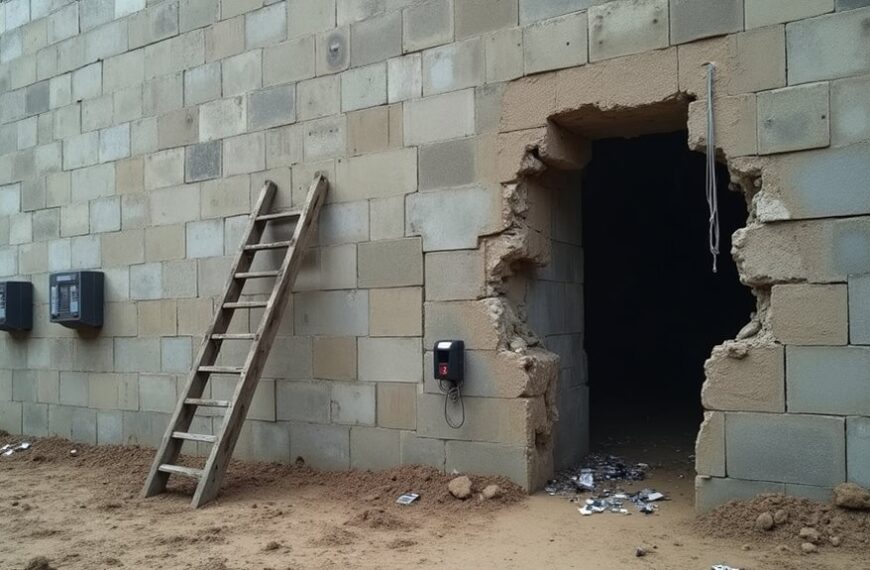Amazon’s Project Kuiper satellite internet isn’t launching next week. The first operational launch is scheduled for April 9, 2025, when 27 satellites will deploy from Cape Canaveral. This ambitious project, announced in 2019, aims to provide affordable high-speed internet globally with plans for 3,236 satellites by 2029. The constellation will operate between 590-630 kilometers altitude and cover regions 56 degrees north and south of the equator. The full five-phase deployment reveals Amazon’s extensive connectivity vision.
As Amazon pushes forward with its ambitious space-based internet service, Project Kuiper is taking shape as a major contender in the satellite broadband market. The company announced the project in April 2019 with a mission to bridge the digital divide through affordable, high-speed internet access.
You’ll soon see the first operational launch of Project Kuiper satellites, scheduled for April 9, 2025. This inaugural launch will deploy 27 satellites, marking the beginning of Amazon’s planned 3,236-satellite constellation. The mission, dubbed Kuiper-1, will lift off from Cape Canaveral aboard an Atlas V rocket.
The satellites will operate in three orbital shells at altitudes between 590 and 630 kilometers. Amazon has planned a five-phase deployment strategy, starting with 578 satellites orbiting at an inclination of 51.9 degrees.
Project Kuiper’s technology sets it apart from competitors like SpaceX Starlink and Eutelsat OneWeb. The satellites feature advanced optical inter-satellite links capable of transferring data at 100 Gbps across distances of the 2,600 kilometers. The project is led by Rajeev Badyal, a former SpaceX executive with extensive experience in satellite technology.
Amazon’s manufacturing capabilities have expanded considerably. The recently opened Kirkland facility, which began operations in April 2024, can produce five satellites daily. This facility works in conjunction with the Redmond headquarters for R&D and the Everett Logistics Center for component supply.
You’ll have access to various customer terminals designed for residential and enterprise use. These terminals connect to the satellite network using advanced phased-array antennas, delivering consistent broadband service.
The service will cover regions between 56 degrees north and south of the equator, providing connectivity to underserved areas around the globe. Amazon has secured numerous launch agreements with providers including United Launch Alliance, Arianespace, and Blue Origin.
Project Kuiper combines satellite technology with ground-based infrastructure to minimize latency and maximize speed. The satellites incorporate Hall-effect thruster technology and solar arrays that enhance performance while reducing visibility to astronomers through special film coating.
Amazon aims to complete the full deployment of 3,232 satellites by 2029, establishing a competitive alternative in the growing satellite internet market.
Frequently Asked Questions
How Will Project Kuiper Affect Existing Satellite Internet Providers?
Project Kuiper will intensify competition for existing satellite internet providers.
You’ll see Starlink, Hughesnet, and Viasat facing a formidable rival backed by Amazon’s $10+ billion investment.
These providers may need to reduce prices and improve service quality to retain customers.
Kuiper’s advanced technology offering lower latency and higher speeds will pressure competitors to innovate.
Traditional satellite services with higher latency will particularly feel the squeeze as Kuiper’s LEO constellation challenges their market position.
What Security Measures Protect User Data Transmitted Through Kuiper Satellites?
Your data on Kuiper’s satellite network is protected through thorough security measures.
The system employs AES-256 encryption for end-to-end protection and implements secure key exchanges using protocols like Sigma.
Hardware roots of trust guarantee secure boot processes while custom-designed proprietary hardware prevents unauthorized access.
The network undergoes rigorous testing before deployment.
Kuiper’s security team continuously monitors for threats and updates protections to adapt to emerging vulnerabilities, assuring your information remains secure throughout transmission.
Will Project Kuiper Be Available in Developing Countries?
Yes, Project Kuiper will be available in developing countries.
You’ll see coverage in places with limited traditional infrastructure, as Amazon has partnerships specifically targeting underserved regions. Their agreement with Vrio Corp. will bring service to seven South American countries, reaching approximately 383 million people.
The system’s design addresses affordability concerns to help bridge the digital divide.
Project Kuiper’s full constellation of over 3,200 satellites aims to provide global coverage, including remote and economically disadvantaged areas.
How Does Amazon Plan to Address Potential Space Debris Concerns?
Amazon plans to address space debris concerns through several strategic measures.
You’ll notice they’ve designed satellites to operate at low altitudes for easy deorbiting and equipped them with active propulsion systems for end-of-mission disposal.
They’ve committed to providing semi-annual reports on conjunction events and debris management to the FCC.
Additionally, Amazon has joined the European Space Agency’s Zero Debris Charter, demonstrating their commitment to sustainable space practices that exceed regulatory requirements.
What Is the Expected Lifespan of Individual Kuiper Satellites?
You’ll find that individual Kuiper satellites have a projected operational lifespan of approximately 7-10 years.
Amazon has designed these spacecraft with durability in mind, incorporating electric propulsion systems that enable orbit maintenance throughout their service period.
When satellites reach end-of-life, they’ll perform controlled deorbit maneuvers, ensuring they burn up completely in Earth’s atmosphere.
This deliberate decommissioning strategy helps Amazon comply with international space debris mitigation guidelines while maintaining constellation integrity.





